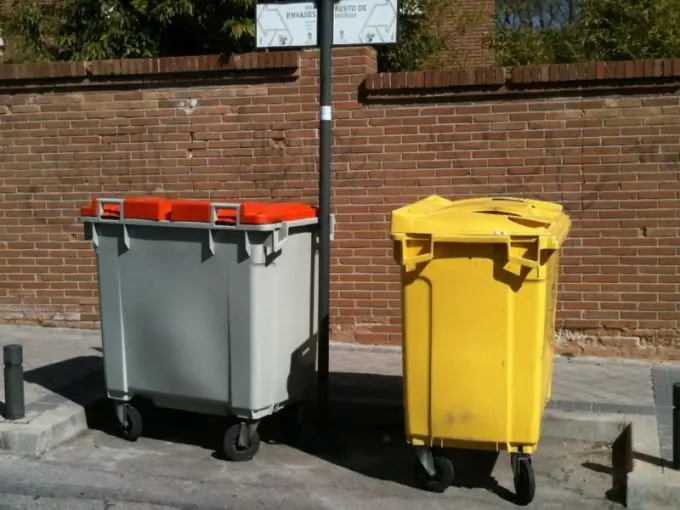- Author Nora Macey [email protected].
- Public 2023-12-16 10:17.
- Last modified 2025-01-23 08:47.
Enterprises with responsibilities for solid waste management use different units of measurement. Management companies that remove containers of garbage from yards usually count the amount of waste. Landfills and recycling plants accept waste, most often in tons. At the same time, enterprises must settle accounts with each other, and accordingly - calculate the cost of some common unit of measurement of solid waste.

It is necessary
- - scales for weighing containers;
- - calculator.
Instructions
Step 1
Check what kind of garbage you are talking about. Waste has different densities and, accordingly, different coefficients are used in the calculations. If your locality has adopted a separate collection of solid household waste, find out the density of plastic bottles, cardboard, glassware, etc. For example, the average density of plastic bottles is about 30 to 40 kg / m3, the data for corrugated board and aluminum cans. But the density of whole glassware is almost ten times higher.
Step 2
The density of common debris will also vary in different conditions. For example, at an unauthorized landfill it is 80 kg / cubic meter, in a container - from 180 to 240 kg / cubic meter, and at a landfill it may even be 500 kg / cubic meter. m. Determine at what stage of processing you will convert one unit to another.
Step 3
In some cases, you can determine the experimental density of municipal solid waste. Select containers with the same type of waste. The more there are, the more accurate the result will be. The containers must be filled according to the standard (that is, there must be no overflow or underweight). Calculate the total weight of municipal solid waste and divide by the number of containers. You will receive an average weight of trash in one container. By dividing it by volume, you will find the average density. You can get the total mass and divide it by the volume of all containers.
Step 4
Remember how to express the volume of any substance in terms of its mass and density. It can be calculated by the formula V = m / ρ, where m is the mass of the substance, and ρ is its density. By dividing the mass of municipal solid waste by the average or experimental density, you will get the volume you need in cubic meters. Accordingly, if you know the volume and density, multiply them to get the mass in tons.






